Industry Trends
Four Core Network Capabilities that Enable the Metaverse
To unleash the potential power of the metaverse, operators need to focus on evolving core networks.


By Guo Peng, Deputy Chief Marketing Expert for Wireless and Cloud Core Network, Huawei
Over the past 15 years, operator revenues have grown rapidly thanks to different stages of monetization. Methods for realizing return on investment in the metaverse are still being explored, but it is clear that target network planning is a key factor that operators must focus on to achieve success.
I. The metaverse demystified
Mobile communication is transforming the world, with all aspects of life becoming digitalized and mobile, as mobile broadband booms thanks to technological advancements. Technologies such as high-speed networks, cloud computing, artificial intelligence (AI), digital twins, 3D rendering, extended reality (XR), and blockchain are all advancing, and terminal devices are iteratively evolving. This will transport the metaverse from science fiction to reality in the shape of an all-sensory, multi-dimensional, and immersive form of human-computer interaction.
Metaverse-related products are already seeing application in areas like VR and AR, online gaming, and social networking. For example, due to restrictions during the pandemic, some colleges of Communication University of China reproduced their campuses in the game Minecraft, allowing graduates to join graduation ceremonies using avatars. This overcame the limitations of social networks to deliver a more immersive experience. The metaverse integrates the virtual world with real-life social interactions by turning two-dimensional images into multi-dimensional, interactive, and real-time spaces, resulting in new social relationships that integrate online and offline interactions.

Figure 1: The metaverse breaks boundaries between the virtual and physical worlds
II. Cloud core network capabilities redefined by the metaverse
Looking back at the journey taken by 3G and 4G, we see strong demand emerging during each phase of development. Over the past 15 years, the monetization basis for operators has transitioned from user-numbers to traffic to data. Most operators achieved rapid revenue growth by monetizing the number of users and thereby gaining higher average revenue per user (ARPU). However, they failed to seize the subsequent opportunities to monetize traffic, as they stuck to the scale-expansion approach of the previous era. This led to revenue declines for some operators, causing the number of operators worldwide to rapidly decrease.
Looking to the future, operators are expected to be more prudent when investing in the metaverse. This is because the metaverse is being introduced at a time when operators have still not harvested full RoI from 5G and when monetization based on user numbers is no longer relevant. Sound target network planning may be the key for operators to succeed in the metaverse era. A cautious approach to investing means that operators require precise planning, investment, and network deployment to maximize network value.
Service-based industry analysis and research show that to deliver immersive metaverse experiences, operators' network capabilities should vertically focus on bandwidth, latency, and reliability to address single-service needs, while horizontally focusing on network O&M and intelligence to address multi-service requirements.
1. Ultra-high bandwidth and uplink capabilities
According to the market researchers Omdia, home broadband services with download speeds of less than 100 Mbit/s will be phased out of the market, while the average download speed in leading countries is expected to exceed 500 Mbit/s. More than 300 service providers in major countries and regions are already offering download speeds of at least 1 Gbit/s. By 2025, 1 Gbit/s home connectivity will be commonplace, and consumers will be demanding more personalized services.
Omdia also estimates that there will be over 187 million gigabit broadband users worldwide by 2025. Gigabit connectivity is crucial to the evolution of smart cameras, drones, and industrial cameras to ultra-high definition (UHD), the development of VR and AR technologies, and use cases like industrial manufacturing and outdoor detection and monitoring.
In addition, with the enhanced interactivity of XR technology, related services will require stronger uplink capabilities. Apps like Zoom, Google Classroom, Skype, and Microsoft Teams generally require around 2 Mbit/s uplink throughput.
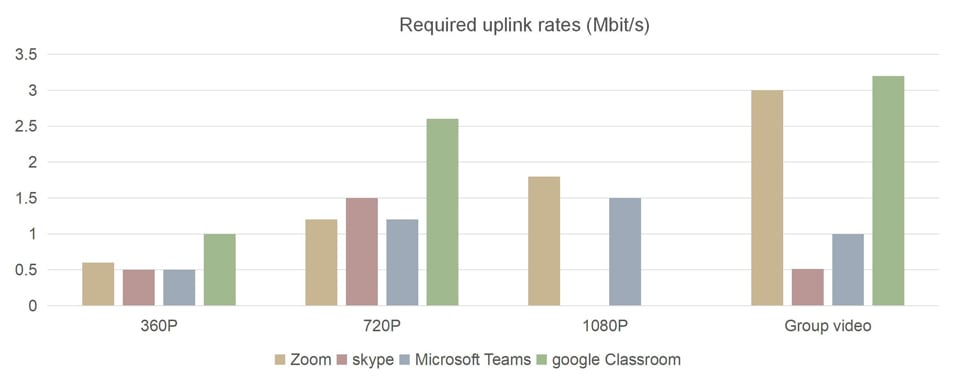
Figure 2: Uplink throughput requirements of videoconferencing apps
2. Differentiated and deterministic experiences
Immersion is a key characteristic of the metaverse, for which low latency is essential. Latency determines the speed at which users can receive data, and operators must weigh and balance network investments to address diverse service requirements. Therefore, networks must be able to deliver differentiated and deterministic experiences.
Differentiation
In the future intelligent world, networks will connect both people and things.
The current best-effort network service model can only meet the basic requirements of consumer services. The metaverse enables new, XR-based service experiences. If operators can provide differentiated experiences, users will be willing to pay a premium, which essentially forms a better method of monetization.
For industry services, many use cases are related to production, where scenarios vary greatly. Smart cities require support for large numbers of connections, smart factories require low latency, and technologies like cloud VR require high bandwidth. Assurance of differentiated experiences will be a must for these smart systems. For example, during peak days at Shenzhen Airport in 2019, an average of 1.13 planes took off or landed every minute. Scenarios like this mean that power systems must be able to guarantee 99.999% reliability. Each millisecond increase in latency in Wall Street's financial trading system, for example, can result in economic losses of more than US$1 million.
Network differentiation capabilities focus on three dimensions: differentiated orchestratable networks, dedicated networks that ensure data security, and self-managed DIY networks.
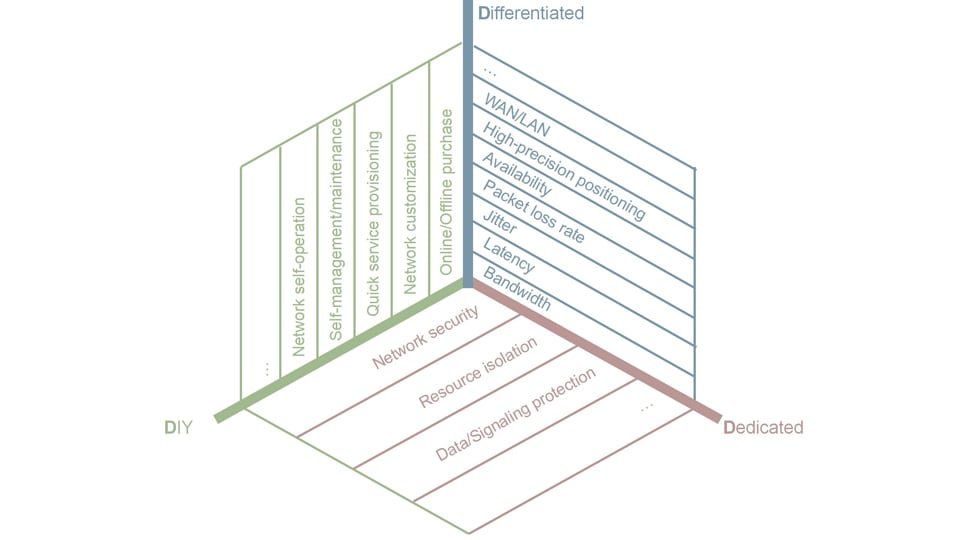
Figure 3: Network differentiation capabilities in three dimensions
Determinacy
Metaverse applications in industry scenarios have very low tolerance of abnormal deterministic indicators.
Consumers have relatively high tolerance for unstable network experiences, such as delays, frame freezing, and artifacts. Generally, consumers who face an occasional deterioration in service experience will quickly forget about it if a satisfactory experience is quickly restored. However, the lack of determinacy required by industry applications directly compromises productivity. For example, to achieve automation control in factories, applications must be closely coupled with network KPIs, as their operations depend on preset network communication service capabilities. Network indeterminacy recorded by industry applications, such as latency, abnormal jitter, and packet loss causing timeout, may cause system exceptions or trigger corresponding system protection mechanisms such as downspeeding and shutdown. Such occurrences have a clear effect on the guarantee of service level agreements (SLAs). Unlike KPIs, which impose high requirements on values, determinacy emphasizes the stability and reliability of KPIs such as stable low latency and stable uplink bandwidth. Determinacy therefore serves as the basis of commercial service SLAs that are committable, measurable, and guaranteed.
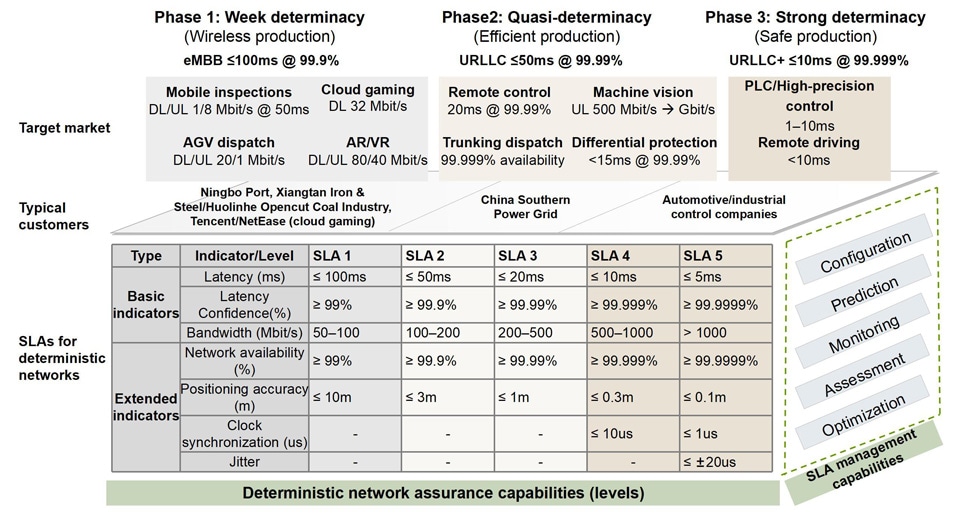
Figure 4: Deterministic network architecture
3. Intelligence, simplification, and automation
Intelligence
AI is ubiquitous throughout all levels, applications, and scenarios of the metaverse.
AI has already penetrated many aspects of work and life, paving the way for the metaverse to become a digital living space that integrates virtual and physical experiences. Examples of AI applications include smart contracts on a blockchain; brain-computer interfaces as part of human-computer interactions, automatic generation of characters, objects, and even stories in video games; speech recognition and synthesis of virtual characters in the metaverse; machine translation of languages; network AI in 5G/6G/computing networks; and full lifecycle management through digital twins.
Intelligence is becoming an essential need to address the diversity of metaverse services, and dumb networks will no longer be sufficient. With digital twins and simulations based on AI and big data technologies, networks should be able to recognize services, predict service development, adapt to the latest services, and manage service experience from end to end.
Simplification
Operators' business focus is shifting to the B2B market. The service requirements of different industries vary, because the industry market is fragmented and scenario-based. No single product or solution can be replicated at scale across projects, even in the same industry. For example, video backhaul services use cameras from different vendors with different bit rates, which results in different requirements for network bandwidth. In terms of operating environments, those that involve high-temperature, high-humidity, explosive, and high-speed mobility scenarios have higher requirements for network reliability and safety. In addition, machine vision for smart manufacturing factories requires synergy between large-uplink 5G, cloud, and AI. These are all examples of challenges that set a higher bar in terms of operators' capabilities for offering scenario-based solutions, while requiring operators to have differentiated industry integration capabilities. Huawei's core network solution is designed to address such challenges by simplifying networks.
Automation
The metavese centers on services and is based on networks. Network O&M capabilities will determine just how far the metaverse can go. Metaverse connectivity requires big data and intelligence to replace manual O&M with hyper-automation to reduce decision complexity and improve efficiency. Hyper-automation based on intelligent technologies is not just about automating simple repetitive tasks, but also intelligently adapting to needs for differentiated experiences in different service scenarios. Hyper-automation is capable of streamlining multiple tasks and unleashing network productivity.
Hyper-automation will enable self-serviced, self-delivered, and self-assured full-lifecycle network O&M capabilities that offer users zero-wait, zero-touch, and zero-fault experiences.
In addition, new ICT requirements will mean demand for "butler services". The new service capabilities required will include service provisioning in minutes, end-to-end visible network SLAs, and flexible DIY service combinations. Such capabilities will ensure quality service experiences, from subscription to use and payment.
III. Building cloud core capabilities to enable the metaverse
1. Deterministic core networks
Before 5G, mobile broadband networks were best-effort networks, while fixed-network private lines offered specific SLA requirements. Compared with individual or family broadband packages, enterprise private lines of the same bandwidth not only require guaranteed bandwidth, but more importantly require specific SLAs for security, reliability, service availability, and professional services. In the more stringent industrial Internet, IEEE defined the TSN standard, and worked with the later-established IETF DetNet Working Group to study deterministic communication paths in industrial automation scenarios.

Figure 5: Typical SLA for private line quality
Mobile networks and fixed networks differ in terms of SLA assurance because the latter consist of three parts: radio access network (RAN), transport network (TN), and core network (CN).
Of these three, the RAN is to some degree inherently unpredictable, because it is vulnerable to interference due to rarely being deployed in open environments, making it a challenge to ensure network determinacy over RAN. However, the CN is able to gain an overview of the entire network topology and schedule global resources to realize network service orchestration, scheduling, and management. This makes the CN capable of providing deterministic experiences (including latency) for service applications and pipes based on service awareness. Therefore, the CN can help the RAN improve deterministic capabilities.
Going all-cloud
Cloud-native is set to become the cornerstone of all solutions. Unlike the dedicated private lines of traditional industry markets, cloud-native 5G mobile networks can transform private lines into private networks by leveraging their mobility. This results in virtual private networks that use cloud-based resources that can be flexibly orchestrated. In an all-cloud system, operators can define and dynamically adjust SLAs in multiple ways at different levels, such as host-group hardware isolation, virtual resource pool isolation, network slice isolation, and resource sharing. Cloud-native microservice and container technologies will make the entire network more reliable and flexible, and service deployment more agile.
In addition, cloud-based infrastructure is a vital part of deterministic 5G networks. Environments for industry deployment are complex, with each industry having unique requirements regarding functionality and performance. Traditional dedicated hardware and dedicated protocol stack solutions are costly and lack both versatility and scalability. To handle the diversity of deployment environments and upper-layer applications, 5G deterministic networking (5GDN) employs cloud-based infrastructure, enabling multi-purpose 5G networks.
High stability and reliability
Metaverse services set a higher bar for data center (DC) reliability, because network function virtualization (NFV) systems possess more service nodes than traditional systems, which in turn means more potential fault points and higher risks. IT designs must take advantage of multi-level disaster recovery (DR) and backup systems for NFV systems to ensure carrier-class high reliability and address operation challenges.
IT-level DR: Each data center supports hardware multipathing and multiple availability zones (AZs), improving DC reliability. An independent power supply and network configured for each AZ means that services can be quickly switched to another AZ if one AZ in a DC is faulty.
NE-level DR: A multipath architecture improves virtual network function (VNF) reliability by dealing with faults at multiple points. The stateless design, which decouples status data from service processing, ensures services can be quickly switched to the remaining virtual machines (VMs) even if multiple VMs in the system simultaneously become faulty. In addition, A/B tests are conducted to support agile service launch and reduce risks of commercialization on live networks.
Network-level DR: Cross-DC NE pools are used to improve network reliability. If a VNF in a single DC is faulty, services can be quickly switched to a VNF in another DC, guaranteeing service availability. In addition, services are connected to multiple DCs to ensure telecom-level reliability.
Network slicing and open capabilities
As a way to present determinacy, network slicing requires the highly-automated network deployment, provisioning, and O&M. By slicing the network through layered content encoding and multi-stream transmission, as well as sensing services based on application characteristics, resource allocation and scheduling can be optimized based on content characteristics to ensure deterministic experiences.

Figure 6: End-to-end network channel
A network slice constitutes a logical, end-to-end network, enabling one or more network services to be flexibly provided to meet user needs. This makes it crucial to maintain open interfaces. The openness of interfaces impacts multiple steps including demand, management, deployment, and orchestration (Figure 7).
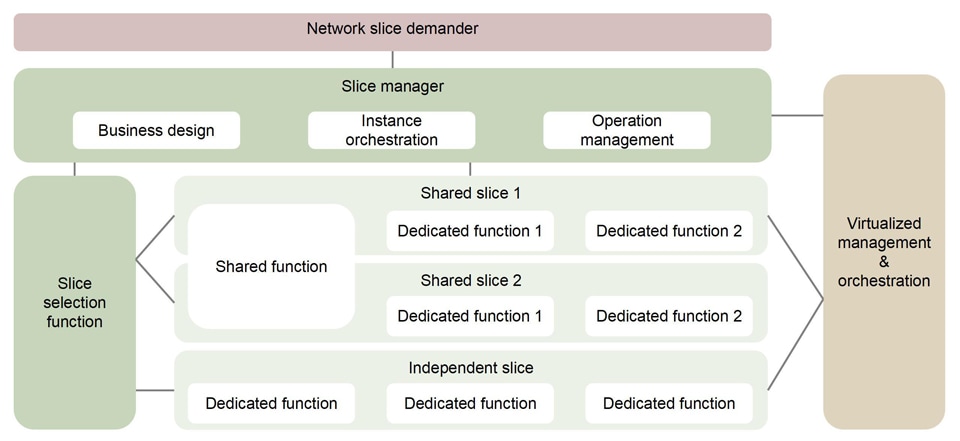
Figure 7: Slicing demand management architecture
2. Interactive core network
Data interactivity
XR-based metaverse services often instantaneously generate elephant flows. Intelligent frame identification during these elephant flows is necessary to dynamically adjust the priorities of key frames. In addition, the relationships between other data packets and key frames should be identified, with data packets belonging to the same frame being uniformly scheduled to ensure the integrity and synchronization of all data. Furthermore, the CN and RAN need to be associated, and the RAN should be instructed to maintain the same scheduling mechanism as the CN. Through comprehensive E2E coordination, resources can be flexibly allocated to manage elephant flows (Figure 8).
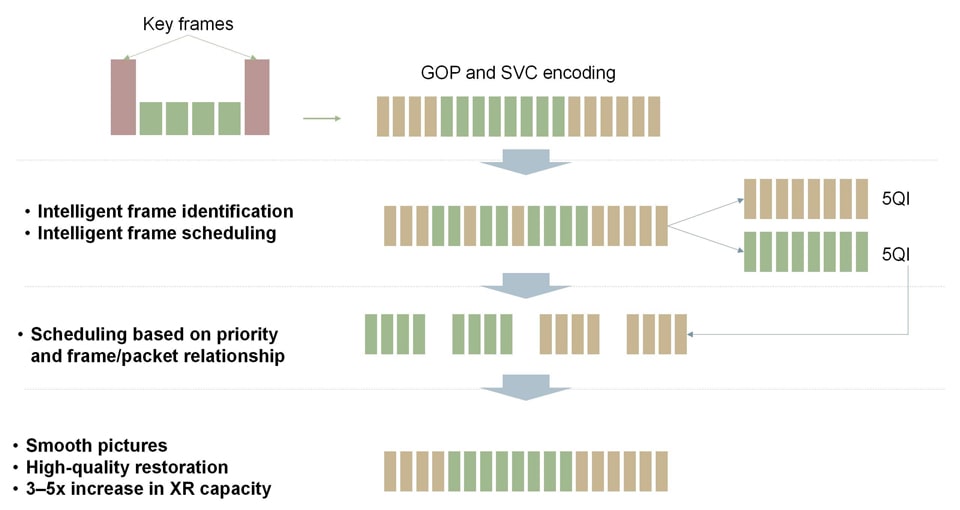
Figure 8: Key frame identification and scheduling mechanism
Additionally, capabilities like the network data analytics function (NWDAF) and service management function (SMF) can be added to sense multimedia features (Figure 9).
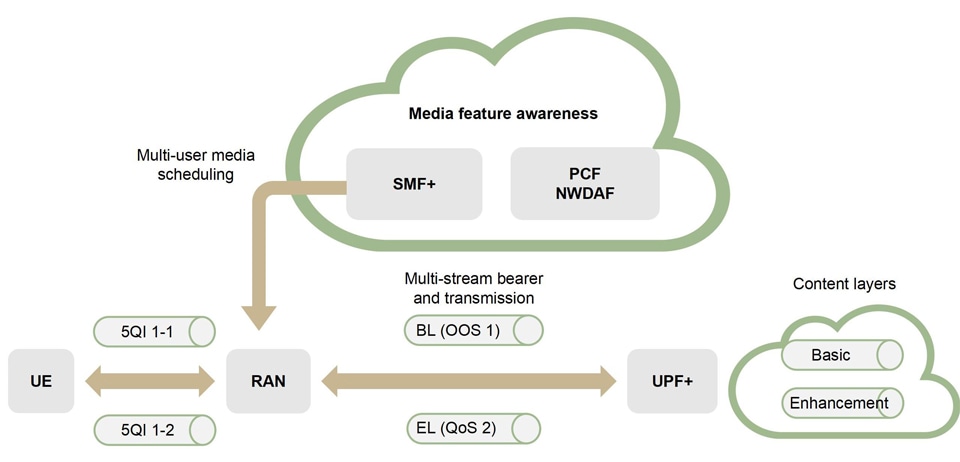
Figure 9: Multimedia feature sensing mechanism
Voice interactivity
A clear voice experience is the most basic requirement for existing voice services. In the metaverse, service forms like intelligent calling, switched calling, and remote sharing will all be added to voice service requirements. 3GPP has also defined enhanced voice services, bringing more voice-based interactions to the metaverse. For example, service planes can be introduced to enhance digital streaming capabilities, which can then be supplemented by dedicated real-time assurance (Figure 10).

Figure 10: End-to-end transport architecture
With this basic requirement met, voice networks also require the introduction of related interactive platforms, media resources, and application services (Figure 11).
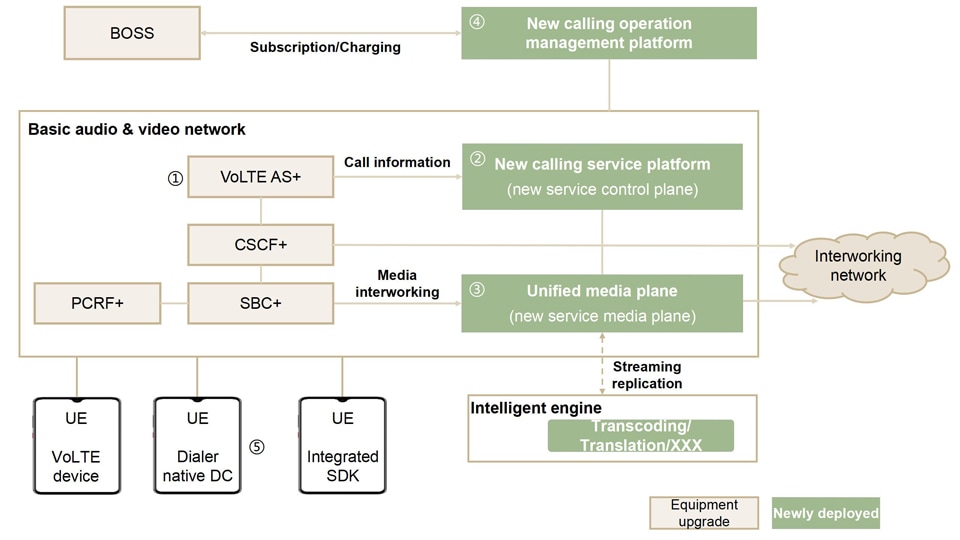
Figure 11: New requirements for platforms and equipment posed by new calling services
3. High-bandwidth and low-latency core network
Despite improved determinacy and interactivity, networks still need higher bandwidth to improve their transmission capabilities. Building edge nodes is an effective solution to bandwidth detour and latency issues.
With this change, the CN shifts from centralized deployment to fully-distributed deployment, and from public networks to private networks, supporting larger amounts of traffic and the construction of more sites. In addition, moving away from the traditional allocation mechanism of static and exclusive occupation of resources means that resources can be scheduled more flexibly and resource utilization efficiency maximized. By class="js-img-zoom" altering the resource allocation method, network capacities can be dynamically deployed on-demand based on traffic flow.
Some industry application scenarios demand more from data security and self-management. For example, industrial Internet applications require an independent 5G network that includes an independent RAN, TN, and CN. Users access such networks with dedicated card numbers, and service authentication is performed locally. The services on these networks are completely separate from those of public networks.
In addition, some services require a balance between exclusive resources and deployment costs. Most enterprise campuses require that data is transmitted only within the campuses. Therefore, most campuses use the partial sharing model to deploy independent CN user planes, while sharing RANs, TNs, and CN control planes with the public network.
In these scenarios, MEC is the optimal choice for helping operators improve user loyclass="js-img-zoom" alty. The deployment position of mobile edge computing (MEC) depends on the network model (sharing/exclusive) and service latency requirements.
City-level MEC is equipped with the best equipment rooms. In some B2C scenarios that have low requirements on latency, such as HD and VR videos, full-cabinet unified edge gateways (UEGs) are recommended for the user planes of 5G public networks.
In an enterprise campus, MEC is deployed to ensure that data is transmitted only within the campus and that the latency requirements of services, such as industrial visual inspection and industrial control, are met. Equipment rooms vary with campuses. As such, the MEC deployment model must be aligned with that of IT equipment.
Onsite UEGs are deployed at the extreme edge, which is applicable to services with strict requirements on latency and deployment conditions. For example, lightweight pole-mounted UEGs, which are free from cables or air conditioners, can be directly installed on poles in base stations to support emergency communications and the live broadcasts of sports.
Each of these models supports fast and lightweight deployment, remote centralized O&M, and high reliability solutions (Figure 12).
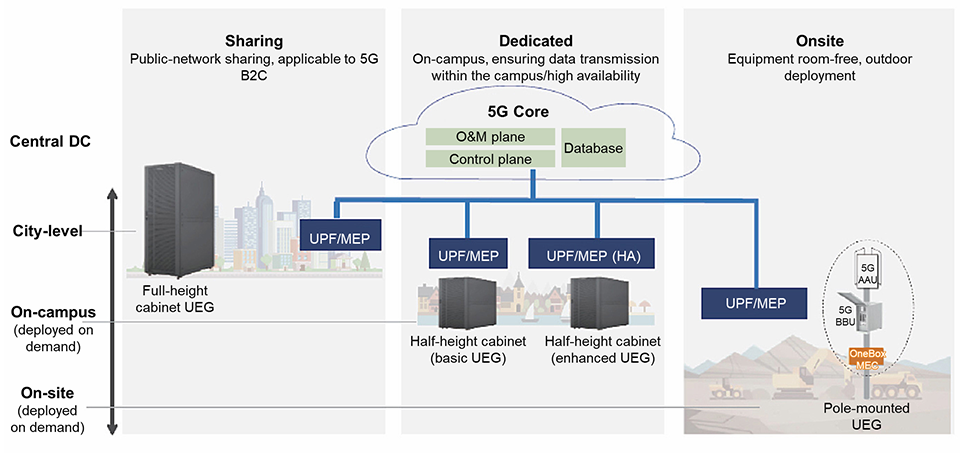
Figure 12: MEC deployment model
With service mobility requirements considered, the recommended pace and stages of MEC deployment are as follows (Figure 13):
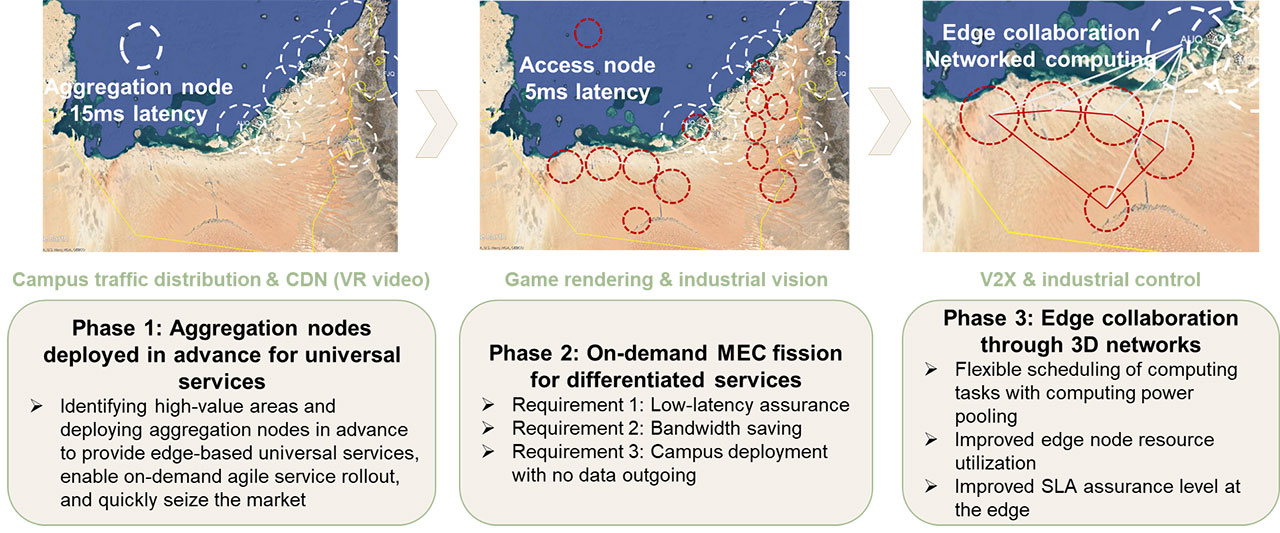
Figure 13: Recommended MEC deployment pace and stages
4. Intelligent core network
Most operator networks are manually operated and maintained by experts. If a network issue occurs, experts will use the operations support system (OSS), element management system (EMS), or auxiliaries to manually analyze, make decisions on, and close the issue. However, in the future, this will no longer be viable due to massive numbers of connections, increasing network scale, and requirements for on-demand, cloud-based service provisioning. The following capabilities must be improved:
Predictive network problem awareness: Based on the in-depth analysis of large volumes of network data, O&M personnel will proactively analyze network status, predict network faults and problems, and promptly provide root cause analysis (RCA) results. This will help resolve problems before customers issue complaints. Examples include predictions of network traffic and faults.
Autonomous network decision-making: Under the supervision of O&M personnel, the network will independently make decisions in specific networking and service scenarios. This will allow the network to respond to complex and uncertain problems far more quickly, and improve network efficiency.
Automated network execution: Automated processes should replace inefficient and repetitive manual operations. O&M personnel operations will change from "in the loop" to "on the loop", and focus more on process and rule management and design.
Huawei's iMaster MAE-CN platform can be used to improve core network capabilities, enabling fast service demarcation and location, while introducing CD and CT capabilities. As a unified interface, the iMaster MAE-CN dynamically collects real-time data such as network resources, service data, operating status, faults, and logs (Figure 14).
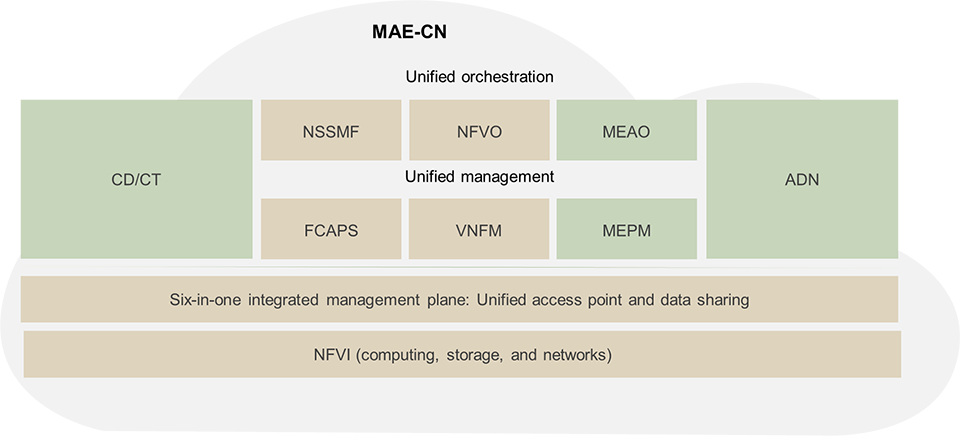
Figure 14: iMaster MAE-CN architecture
IV. Summary and outlook
5G is bringing unprecedented changes and opportunities to the telecom industry and the metaverse will catalyze 5G service development. Seizing market opportunities presented by digital transformation is the key for telecom operators to overcome the bottlenecks limiting their growth. Core networks built for determinacy, interactivity, and intelligence can help operators fully unleash the value of connectivity, promote the digital transformation of industries, and facilitate shared success with industry customers.
3GPP has defined the core network's basic technological framework and functions, in relation to deterministic capabilities, which will be enhanced in Release 18. Operators are also already exploring more 5G applications. The industry's exploration of the metaverse is still in its infancy, but as related technologies evolve, operators will find the right approaches for services and application scenarios based on their own network planning. This will ultimately facilitate the development of the entire industry.
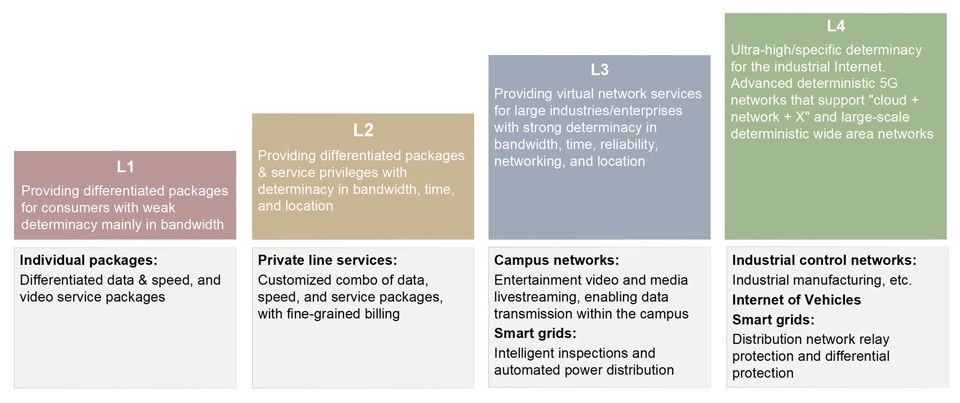
Figure 15: Operator services for different customers
The science fiction novel Snow Crash, published in 1992, depicts humans living in a virtual 3D world called the Metaverse through avatars. Thirty years later, this concept is becoming increasingly close to reality.





